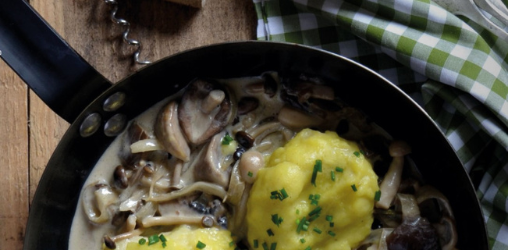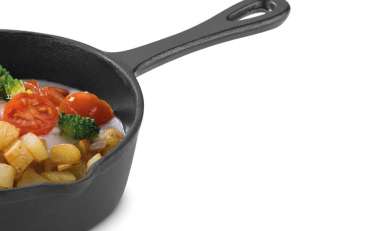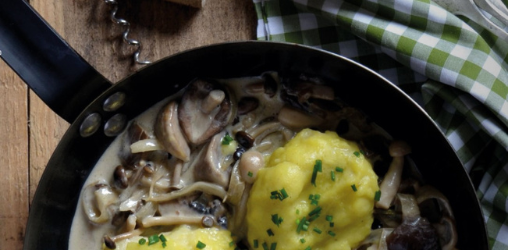Iron cookware
Historically, iron followed copper in the development of cooking materials. In comparison with copper, it has a higher specific heat capacity and a lower thermal conductivity. These characteristics are ideal for achieving and maintaining very high temperatures. Unfortunately, chemically, iron has no beneficial characteristics. . It is a hygroscopic material (it easily absorbs atmospheric humidity) and, in contact with air, it produces oxides (rust) which corrode the material.

Characteristics of iron in cookware
Material: Very heavy Highly vulnerable to corrosion (oxidation).
Thermal conductivity: Not very good (long delay to achieve the desired temperature), however it makes a maintains a very stable temperature for long-duration cooking.
Use: suitable for gas, electric, induction and oven.
Maintenance and hygiene: Before using for the first time, it is advisable to cook something in the item that can be discarded This will allow the initial impurities in the receptacle to be cleaned.
Did you know that?
– The item should be heated before use.
-Food should not be stored in the receptacle after cooking.
– It is recommended to clean with soap-free water, dry and coat with a thin layer of oil before storing in a dry place. This will delay or prevent the oxidation process, keeping its properties in optimal condition.
– Washing in a dishwasher is highly discouraged.

Cast iron
Cast iron is not a metal, but an alloy composed of iron (fe) and carbon (c) in high percentages (between 2.11% and 6.67%, which is the maximum limit of solubility of carbon in iron). Cast iron, compared to iron, has higher mechanical strength, a higher specific heat capacity and lower thermal conductivity. Therefore, it is able to maintain higher and more stable cooking temperatures than iron In some cases, these temperatures are too high for certain types of cooking. For this reason, iron is preferred for delicate cooking, while cast iron is widely used in the production of hobs and griddles.
From a chemical point of view, it presents the same problems as iron and is subjected to the same treatment. Traditionally, to avoid rapid oxidation, iron items designed for cooking go through a curing process. This involves covering the entire surface of the receptacle (both inside and outside) with a layer of grease or oil and subjecting it to a high-temperature process, creating a protective layer that will penetrate the pores, making it impermeable when hot, and will polymerize, forming a non-stick layer similar to the latest polymer coatings. Over time, a stable black oxide is created be – neath the polymerized layer that has excellent protective properties. However, during the initial period of use, it is a good idea to treat the ferrous receptacle carefully as the polymer layer is quite delicate. The use of metal or abrasive sponges and aggressive detergents should be avoided.
Cast iron maintenance
Fine salt is used for cleaning. Until the interior becomes blackened, it is advisable to oil it frequently and avoid cooking acidic foods. Particularly in the past, the inside of iron pans was often enamelled. However, these enamel layers are not very resistant to wear or sudden changes in temperature and tend to deteriorate over time.






Leave a reply